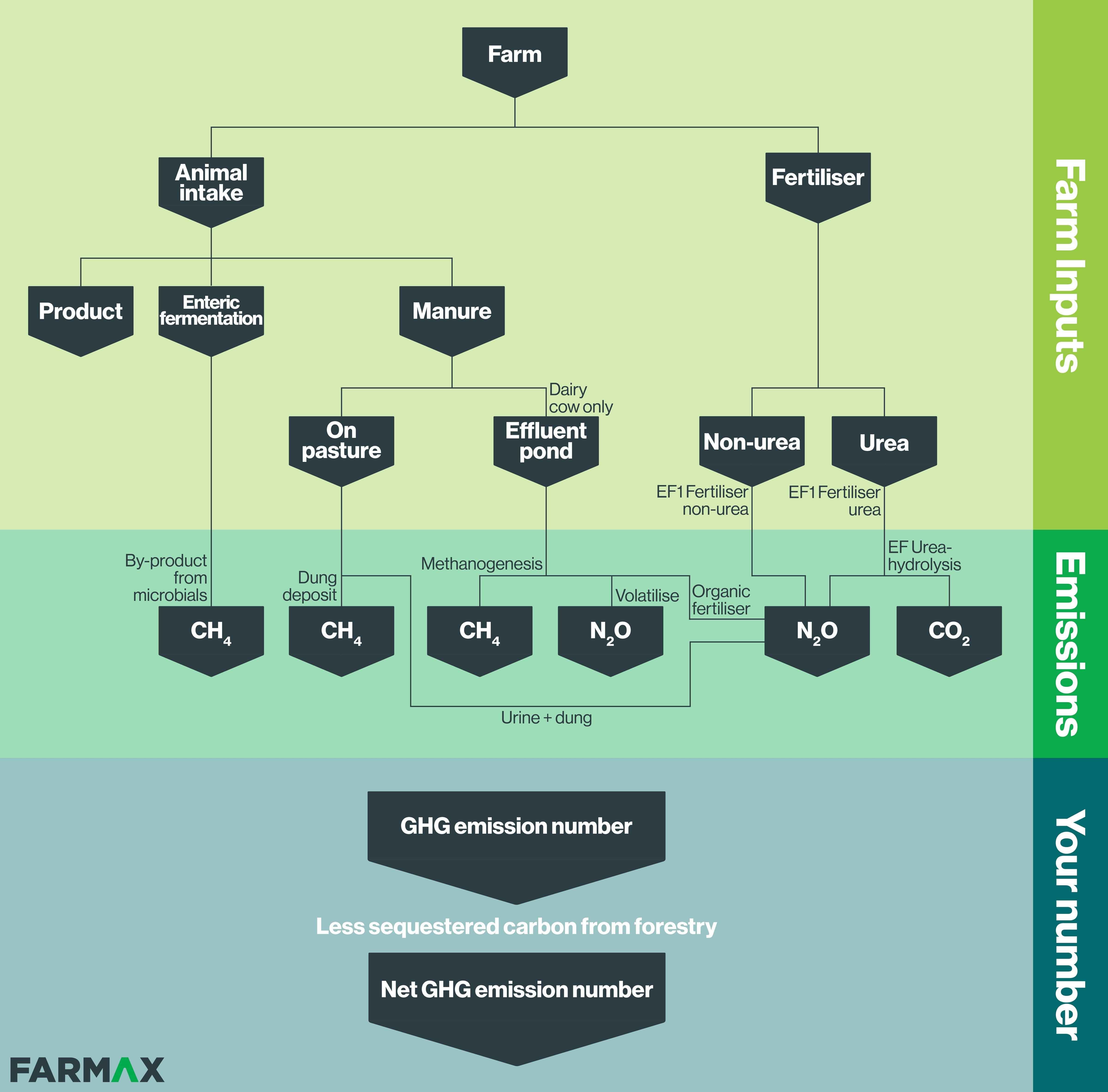How FARMAX calculates GHGs
With various greenhouse gas (GHG) calculation tools available for New Zealand farmers to ‘know their number’, we have put together a simple diagram to help users understand how GHG emissions are calculated in FARMAX.
Developed closely with AgResearch, these reports align with the standard New Zealand Inventory Methodology. Emissions for each gas are reported in units of carbon dioxide equivalent. This is the quantity of CO2 that would have the same global warming potential (GWP) when measured over a specified timescale. The co-efficient to calculate equivalence is different for each gas – find out more here.
FARMAX’s Greenhouse Gas Report shows biological GHG emissions for methane (CH4), nitrous oxide (N2O) and carbon (CO2). It is important to note that emissions from fuel use or non-agricultural waste on farms are not included within these reports.
The calculations focus on animal feed consumption, specifically dry matter intake, and fertiliser use. Methane levels are mainly determined by the feed intake of animals, while nitrous oxide is influenced by stocking rate – as it comes from excretion – and the application of synthetic fertilisers.
Methane (CH4) - from livestock digestive systems
Nitrous oxide (N2O) - from animal manure and fertiliser added to the soil
Carbon (CO2) - from applications of urea
The forecasting model predicts both pasture growth and animal intake to calculate outputs including GHGs. FARMAX takes into account changes in animal liveweight (set by users) and pasture quality through the year in its calculations, enabling more accurate GHG outputs.
The diagram above left shows the factors that influence the GHG emissions reported in FARMAX.
The Greenhouse Gas Report is provided at farm-level, block-level, enterprise-level, mob-level and farmlet-level, with the totals of each level adding up to the totals of the parent. For example, the sum of each mob will equal the total sum at enterprise-level.
In FARMAX, not only can you calculate your GHG number, but you can also run scenarios to understand how mitigation actions will impact your profitability. The three emissions efficiency KPIs are valuable when looking at mitigation scenarios:
kg of carbon equivalence emitted per dollar of gross margin (kgCO2e/$GM)
kg of carbon equivalence emitted per kg of product produced (kgCO2e/kgProduct)
kg of carbon equivalence emitted per kg of dry matter consumed (kgCO2e/kgDM)
We hope this has provided clarity regarding how GHG emissions are calculated in FARMAX and are happy to answer any questions you may have via email at support@farmax.co.nz or phone on 0800 FARMAX (327 629).

